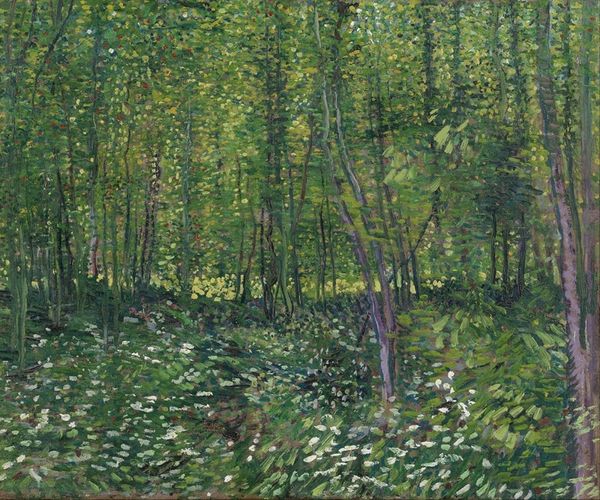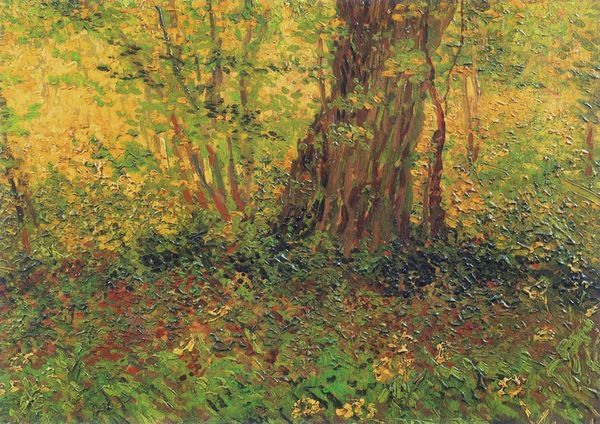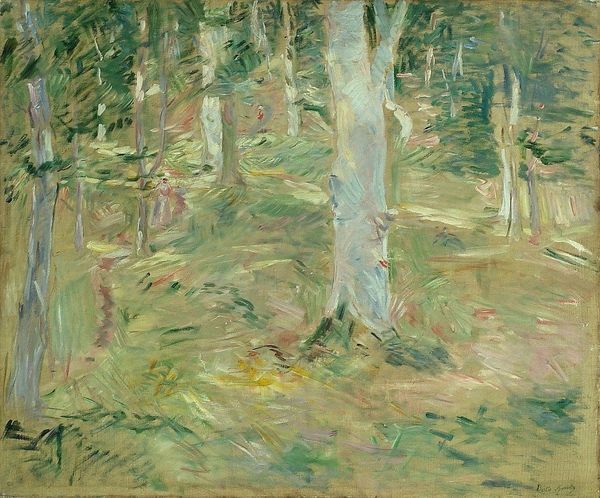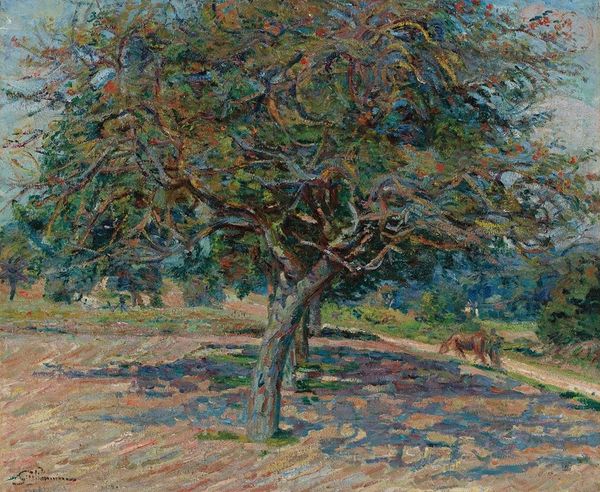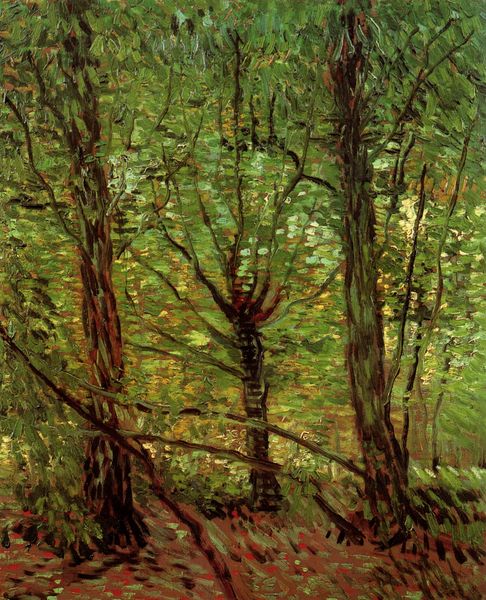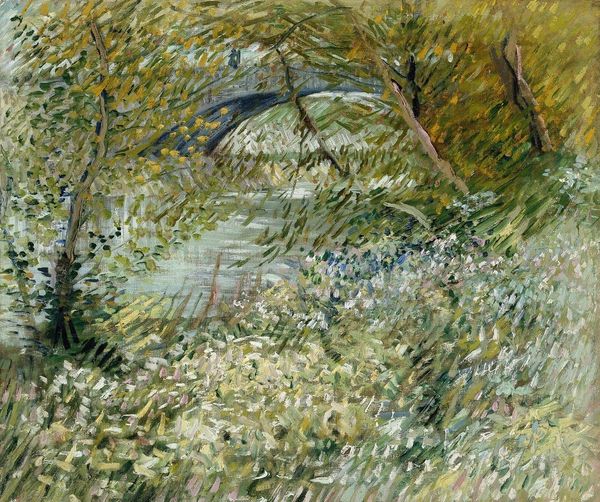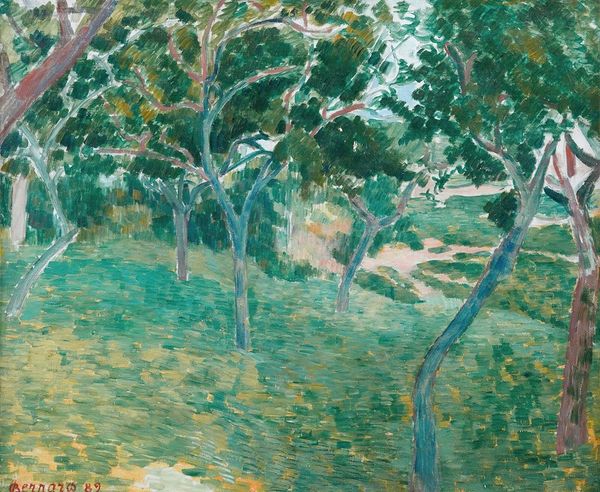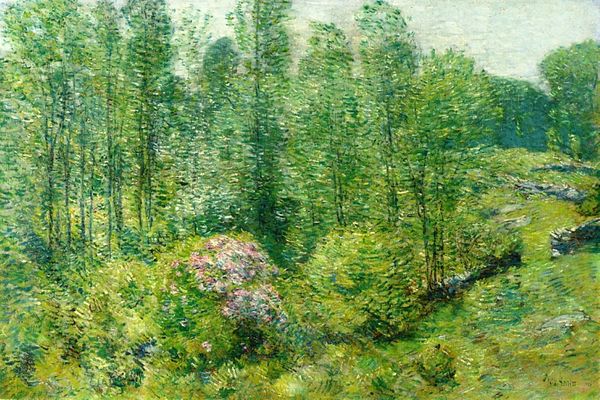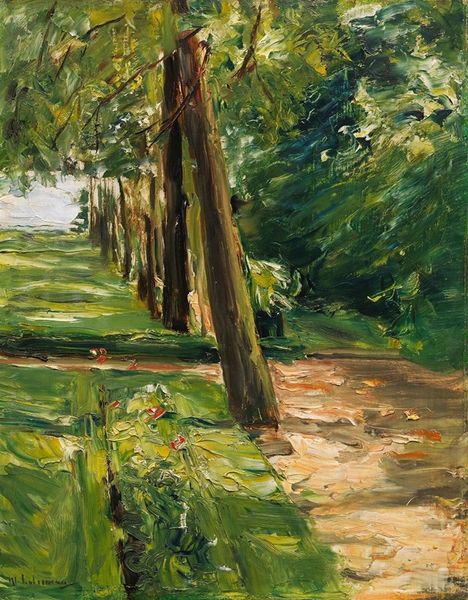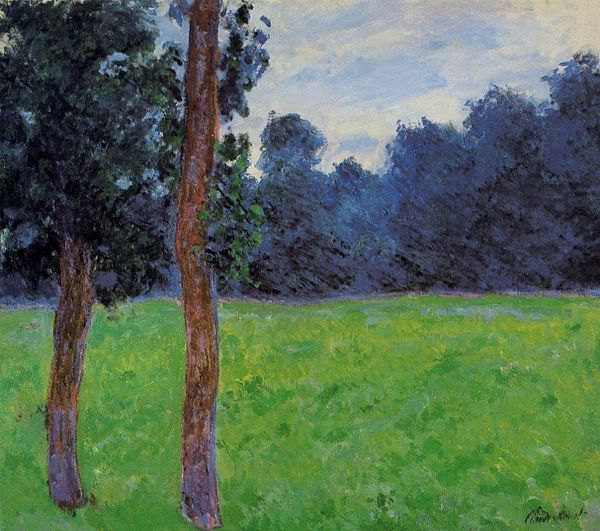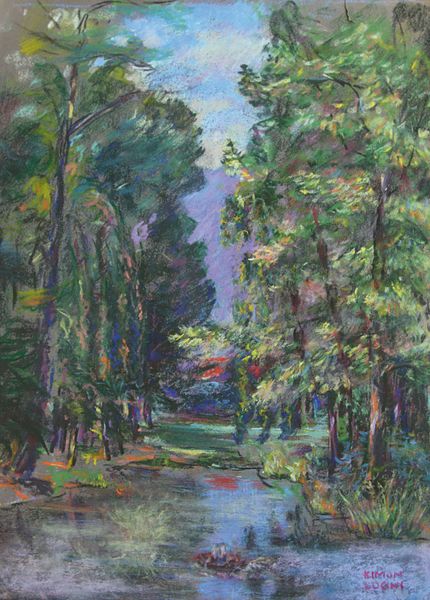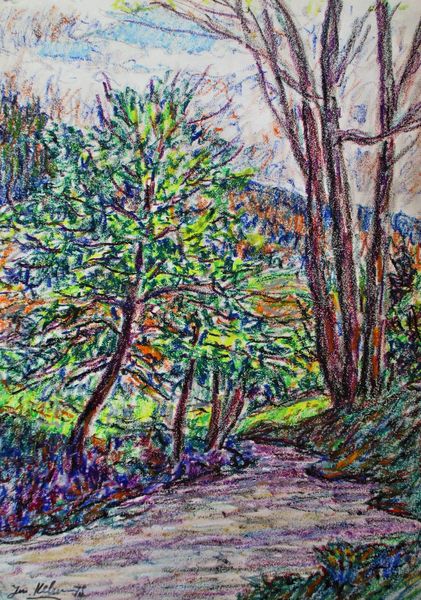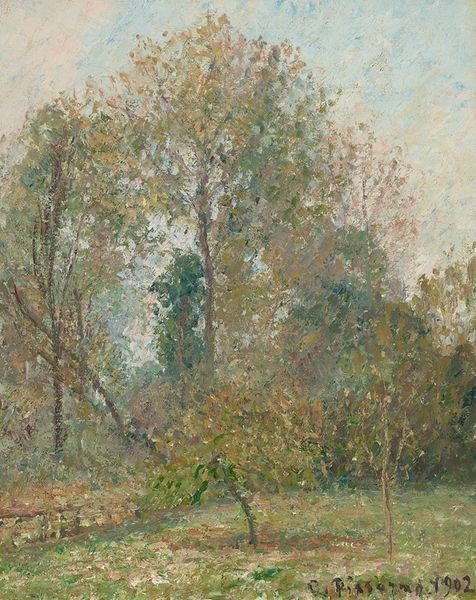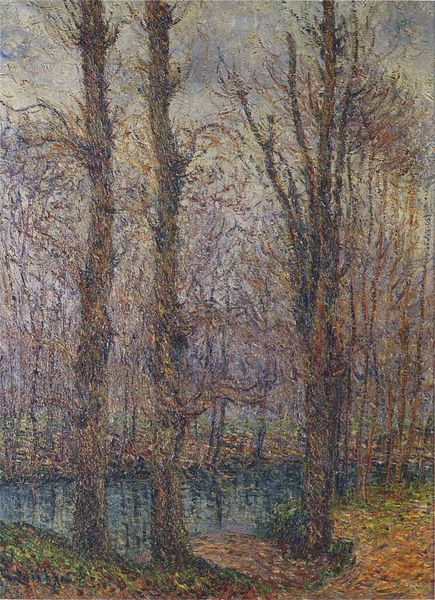
painting, oil-paint
#
painting
#
impressionism
#
oil-paint
#
landscape
#
impressionist landscape
#
nature
#
post-impressionism
Copyright: Public Domain: Artvee
Curator: Take a look at "Trees," an oil painting, thought to be made by Vincent van Gogh. It depicts a densely wooded scene. What are your first impressions? Editor: Immediately, I'm struck by the density. The layering of greens and browns evokes a sense of being overwhelmed by nature, as though the viewer is caught in a verdant maze. It makes me reflect on the romantic ideal of wilderness, untouched by human hands. Curator: I agree. When considering van Gogh's life and his artistic vision, the trees depicted symbolize a deep yearning for solace and connection with nature, which stood as an emblem for a simpler existence away from societal complexities. Van Gogh frequently looked to nature as a refuge, imbuing it with personal significance that reflects his inner emotional landscape. Editor: Right, nature as a sanctuary from societal constraint. I'm seeing in this forest the visual representation of the marginalization Van Gogh felt being at the boundary of conventional society. Look at how those dense clusters of leaves create shadows. Those shadows could very well speak to isolation and the complex negotiations of identity he was constantly performing. Curator: The symbolism goes even deeper when you consider the historical context. During this time, urbanization was rapidly altering landscapes. Nature became a battleground for the forces of industrial progress versus a longing for authenticity, a sentiment deeply relevant in today's debates surrounding environmentalism. Editor: Absolutely, the use of these tangled branches suggests obstacles but it also hints at regeneration. I can’t help but be reminded of ancient pagan beliefs that revere trees as beings of wisdom and as vital components in our ecosphere, beliefs which positioned nature as a female-coded deity or maternal figure from whom humankind emerged. Curator: Yes, and beyond just symbolizing obstacles, the image highlights themes of resilience and the enduring strength of natural forms against human encroachment. Each brushstroke is not merely paint; it represents a quiet rebellion, an appeal for reverence, challenging the viewers to reassess their roles in nature’s degradation. Editor: Thank you. This perspective helps connect van Gogh's nature imagery with broader socio-political implications, enriching my comprehension. Curator: And recognizing symbols as indicators of deep, enduring, sometimes buried cultural memory helps broaden one’s perspective. It is also a good point to bring to the public’s attention today.
Comments
No comments
Be the first to comment and join the conversation on the ultimate creative platform.
